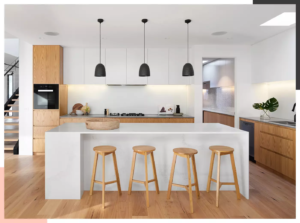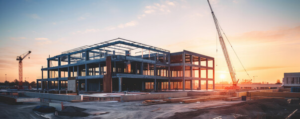Custom Outdoor Kitchen Builder can transform the way you use your backyard. It will create a space for entertaining and cooking while adding value to your home.
Consider a freestanding model if you want an upscale, fully functional kitchen. These can be installed on existing patios and have cabinetry options similar to custom indoor kitchens.

Whether you enjoy grilling and entertaining guests or want a spot to relax with a good book, an outdoor kitchen will add value to your home and make it easier for you to use and enjoy your yard. Many outdoor kitchens are available, but deciding what features will best suit your lifestyle and needs is key. For example, an outdoor kitchen with multiple burners and a rotisserie may be a good choice if you’re a gourmet chef. If you like to entertain, consider adding a sink and refrigerator. Once you’ve decided on the components you need, your custom outdoor kitchen designer can help you create a functional layout that will allow you to get the most out of your new space.
Remember proper lighting and landscaping when designing your custom outdoor kitchen. Both are important for safety and ambiance. In your cooking area, install bright task lighting that illuminates your grill and work areas. This type of lighting will also help reduce your utility bills. Add ambient lighting for the seating and dining areas to create a warm, inviting ambiance. This type of lighting can be achieved using string lights, lanterns, or recessed lighting.
Before you build your custom outdoor kitchen, carefully scout the location and identify the right spot for it in your yard. You’ll need to ensure a place for plumbing, electricity, and, if necessary, new access points from your home. Ideally, your outdoor kitchen should be close to the house so you can easily run in and out for supplies. However, it’s important to remember that too much proximity to your house can be a fire hazard and cause smoke to seep under the siding of wooden decks.
Once you have the perfect spot for your custom outdoor kitchen, choose a flooring material that can withstand the elements and coordinates with the rest of your landscape design. For example, a patio made of natural stone or porcelain tile works well with most outdoor kitchen designs. Synthetic grass is another popular option for outdoor living spaces. It’s easy to maintain and looks great year-round, even in harsh weather conditions.
Whether you host large parties or small gatherings, your outdoor kitchen should center your entertainment space. With an upscale design, your guests will enjoy the convenience of having a full kitchen while spending time outside in your gorgeous backyard. To create an ideal entertaining area, your backyard kitchen design should include plenty of seating options for everyone to relax. It should also have a bar area for cocktails and drinks and a grill for cooking delicious burgers and grilled chicken. Lastly, it would be best to incorporate lighting into your backyard to enhance the ambiance. This could be achieved through incandescent lighting, string lights, or a chandelier over the dining table.
If you’re going with a custom builder, the team will create a one-of-a-kind space designed to match your style and lifestyle. This is the best way to get an outdoor kitchen that looks beautiful, is functional, and lasts a lifetime. Prefab outdoor kitchens are less durable, and their lack of customization options makes them unsuitable for serious cooks.
The sink is a great feature of your backyard kitchen, making it easy to keep your cooking area clean and organized. Choose from various styles and sizes, complete with hot and cold water options, to meet your needs.
You’ll want to include plenty of storage space for food and utensils in your backyard kitchen. This will help you stay organized and prepared for meals, reducing clutter and unnecessary waste. Consider installing built-in shelves or a side cabinet to store essentials like cookware, plates, cups, and bowls. An island with plenty of countertop space is another option, as it will provide a comfortable place for you and your guests to work together or sit while eating.
Another great idea for your backyard is to include a seating area with lounge chairs or sofas. This will allow your guests to relax in comfort after eating and talking, making the space feel more like an extension of your home. It’s important to choose a lounge chair or sofa that is weatherproof so that it will be able to withstand the elements.
Adding an outdoor kitchen to your home is an investment that enhances your lifestyle and increases the property value of your house. We can help you create a functional space for cooking and entertaining that will be the envy of your friends and neighbors.
Conceiving an outdoor kitchen idea is easy enough, but making it a reality can be difficult. The logistics of finding a contractor, architectural drawings, measuring, cutting tile, and laying stone can be overwhelming. A professional outdoor kitchen builder can help you assess the available space, design a structure using the latest CAD software, and guide you through construction.
Before designing your custom outdoor kitchen, consider your family’s cooking habits and lifestyle. If you entertain a lot, consider including more advanced features like refrigeration, an extra counter, storage space, or a bar. You can get away with a more basic setup if you are a casual cook.
Your budget is also an important factor to consider. Going out in your outdoor kitchen is tempting, but if you cut corners, you will probably deal with costly repairs in a few years. If you want your kitchen to last a lifetime, choosing quality materials that will stand up to the elements is important.
If you’re working with a limited budget, you can still create an amazing backyard entertainment hub. In addition to installing a full outdoor kitchen, you can add a grill and some counter space to make it a more versatile area for relaxing and dining. You can add a small refrigerator to keep drinks cold and fresh food.
Our augmented reality feature lets you see your design in your backyard before it’s built. This is an excellent way to get a sense of what it will look like in your space, and it’s the best way to ensure that the layout is right before committing to any major work. Just click the bright orange button at the bottom center of your screen to use this unique tool!
A professional designer can help bring your backyard cooking and entertaining ideas to life. Using the world’s best design software, they can show you what your new kitchen will look like from every angle, how it will work with the rest of your landscape, what it will be like hosting guests, and even how the light will change throughout the day. This is the best way to get a true sense of what your outdoor space will be like before it’s even built.
When shopping around for an outdoor kitchen contractor, you’ll find that there are a lot of options. Prefabricated kitchens are often cheaper but tend to have fewer customization options and a shorter lifespan than custom-designed and built outdoor kitchens. If you’re looking for an outdoor kitchen that will be a permanent part of your yard and last a lifetime, consider working with a Custom Outdoor Kitchen Builder.
They will help assess your space, build a CAD drawing, and guide you through construction. The result will be a beautiful and functional cooking area that will transform your backyard into a true home extension.
A Custom Outdoor Kitchen Builder will create a space suited to your cooking needs and design tastes. They can also install various outdoor living features, such as a fire pit, bar, grill, or smoker. By integrating these features, you will have a space perfect for relaxing after a long day and entertaining friends and family.




